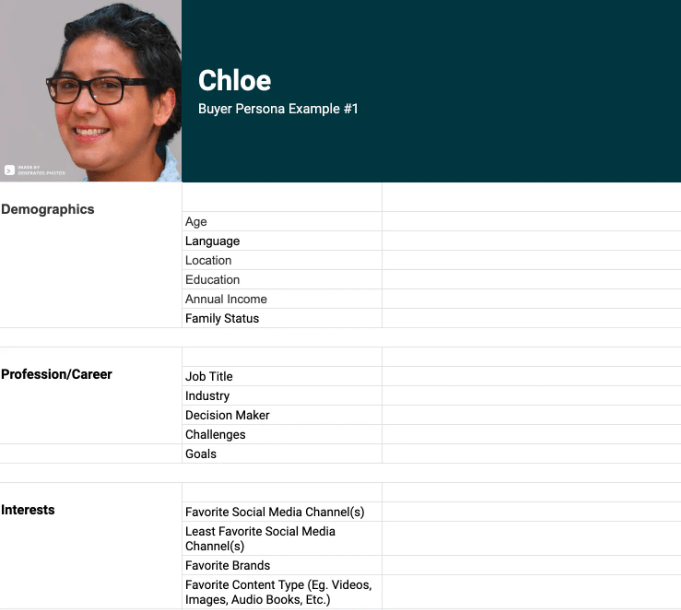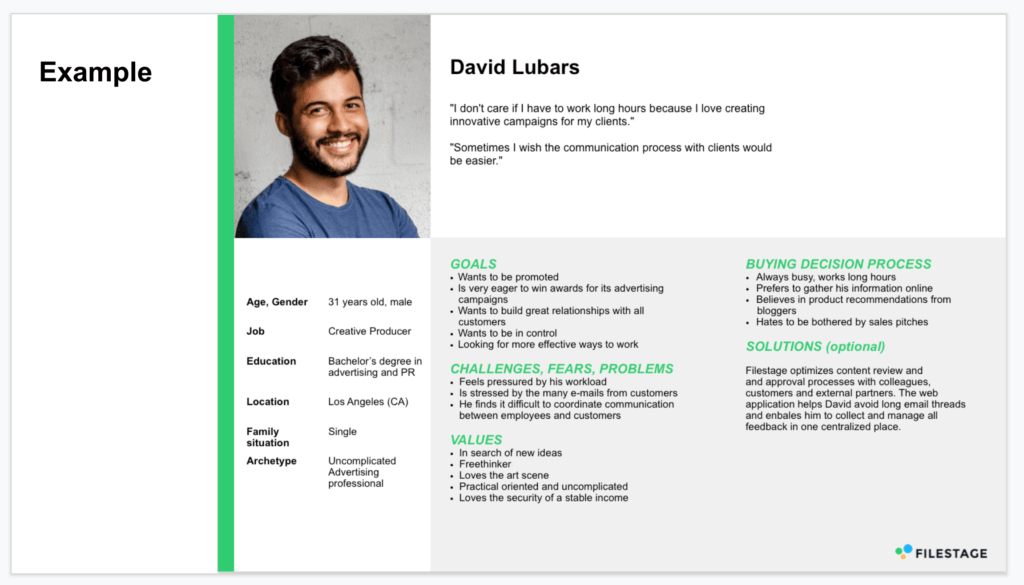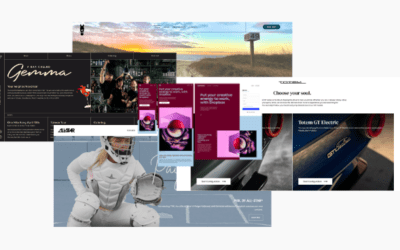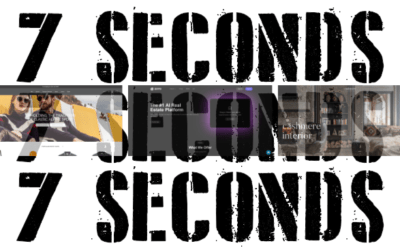Who are the people who actually buy from you?
Selling your products or services doesn’t just happen.
TRUST is the biggest deficit you face today when selling your products and services to your potential customers.
If you want to understand why your customer willingly opened their wallet to buy from you, then you need to understand the decisions they made as they navigated their way to your business.
You need to understand their buyer intent.
Therefore, you must become the trusted, consistent resource that informs them throughout the decision-making process.
The person who walks into your store or office or clicks a buy button online has already traveled a fair distance in their mind on the way to deciding to make a purchase. And then they’ve gone even further down the road to pick your business as the one to buy from.
The puzzle you need to solve is: what is the conversation in their head, what was the trail of nuggets of information that accumulated and influenced them to open their wallet?
When you take the time to define and understand your different buyer personas your business will see its marketing, lead generation, deal pipeline, inquiries, and sales come alive.
What are Buyer Personas?
When you sell a product where the buyer will take days, weeks, months, or even years to decide to buy. Buyer personas matter to you.
Low-consideration products and services don’t need to lean as heavily, if at all on buyer personas.
The key to creating a successful buyer persona is listening to and then relating your customers’ stories about their decision-making process to buy your product or service in their words. This is how you understand them as a buyer.
Importance of buyer personas in marketing strategies
Your customers have instant access to a mountain of product information, reviews, and testimonials.
It’s now more important than ever that your marketing strategy is focused on helping your customer with information about the right option for them at every stage of their buying decision or they can easily go elsewhere.
Remember. People don’t have a problem being sold, they do have a problem being sold to. No piece of software, clever sales close, audience segmentation, data-driven analysis, or copywriting hack can convert a person to buy on the spot. They are however the tools that help move a buyer along their decision-making journey.
People convert themselves, they cross the bridge from considering to buy, to purchasing, in their own time and when they feel comfortable about the decision.
The standard approach to buyer personas
If you do a Google search you will find many articles that list a number of buyer personas, such as:
- User persona: all the potential users of your product or service.
- Customer persona: a profile of the typical customer who buys from you.
- Proto persona: the “Ideal” customer profile.
- Audience persona: groups people based on their interests and pain points.
- Marketing persona: a broad, vague description of your potential customers using data points.
- Student persona: when you need to educate your audience or individuals about your business.
- Buyer persona: the person who actually buys from you.
Each of these personas then gets broken down into features of that persona:
- Name
- Age
- Location
- Position
- Background
- Goals
- Frustrations/pain points
- How to help solve the relevant frustration/pain point


Yet nowhere in the buyer persona templates above is there any information on the persons’ intentions, motivations, or considerations that would compel them to open their wallets to buy expressed in their own words.!
Other than the buyer persona all personas require some guesswork on how best to influence a person to buy from you.
Instead, imagine knowing the exact thinking, internal conversations, and emotions your buyer navigates as they consider making a purchasing decision.
Why they were dissatisfied with other businesses, how they perceive features and benefits to serve their best interests, how a business’s values and culture align with how they see the world, and much more…
When marketing their products and services, most business owners don’t understand that listening to and relating to their customers’ stories is the cornerstone to understanding them as buyers.
You’re in the game of building relationships at scale
Relying on demographics to define your market is misleading when you want to persuade your potential buyers you’re the best option.
You’ve heard the saying many times “It’s easier to sell to existing customers than to keep finding new customers”
Previously as the founder/owner of a shopfitting and cabinet-making business, it was the relationships we built with retailers, and suppliers to major national retailers that were our best sources of ongoing work.



Building trust with your existing clients is one of the greatest ROI strategies you can employ in your business.
When the business cycle turns, and it always turns. It’s those relationships that make the difference between staying in business and going out of business.
Building a relationship of trust and listening to your customers’ stories is mission-critical to understanding your business-specific buyer personas.
Steps to creating your buyer persona
Get the conversation flowing, and keep it flowing
Be patient
Getting to know what motivates your buyers requires you to create a habit and ultimately systems for actively listening to your customers.
Make it easy for your buyer to talk.
Practice patience and empathy, and let them speak.
Remember not everything they say will be positive, however negative statements could also be a reflection on your broader industry and give you a key insight on improving your unique selling proposition which would be pure gold.
Paint me a picture
You want to understand the fullest version of your buyers’ journey.
- How did they become aware of their particular problem or issue, and how did they feel at that time?
- what questions did they have that needed to be answered?
- What skepticism did they have about the solutions, businesses, and people they encountered along the way?
- How did they go about finding answers?
Use your buyers’ words to go deeper
Use their words to uncover deeper meaning and layers as well as a method to follow up on statements they made earlier.
What you want to accomplish is making the detail richer. What expectations were met and what expectations were unfulfilled?
Look for the emotional responses. How did they feel when the product, service, people, teams, or business they chose to go with, worked out? The vindication, confidence, satisfaction, trust, willingness, or even the need to share how great the outcome was and how it could benefit others.
The opposite is also important. When their decision was wrong and things didn’t work out. Your buyers’ confidence in their decision-making takes a hit and their trust in your business, industry, or sales team evaporates and has to be built from the ground up.
This is when 90% of the truth lies below the surface, and you need to dive deeper to understand and see the fuller picture.
There is a chronology
There is a timeline to your buyers’ journey.
However, they will most likely jump around on that timeline when telling their story. Resist the temptation to interrupt.
Make notes and ask questions when possible to fill in the gaps.
Take them back to an interesting part of the story and let them pick it up and run with it.
Let the person talk
When you know what persuades a buyer to make a purchase you are then able to align your marketing message with the buyers’ expectations easily
Your buyer unknowingly goes through a process of decision-making.
As you let them talk you are paying attention to the elements of their story that fill out the five steps below.
The primary catalyst: what is it that initiates and then accelerates a buyer to make the purchase of a solution such as the one you provide
Payoff: what are the success results your buyer is seeking to accomplish? Either on an operational or personal level. At this phase, you would be able to align your products’ benefits with the buyers’ expectations of the benefits instead of squeezing a square peg into a round hole by manipulating your message based on your products’ solution.
The objection: These are the perceived barriers to making the decision to purchase. Usually seen as bad news, however, objections have many angles. The buyer may have had a bad experience with a competitor’s product or service, or they may have heard a story of a bad experience from a friend or business colleague.
Seek to understand the barriers, where they came from, and what’s truly behind them.
The objection is also a great way to develop your unique selling proposition by guaranteeing the opposite result or experience that could be an ongoing issue in your industry.
Buyers journey: this is the filtering process your buyer undertakes to evaluate the universe of product or service offerings available. Research all the criteria, options, offers, risks, features, and benefits, and eliminate competitors in the marketplace to get to a final choice
The trigger: Decision time. Here is where you’ll learn the blend of benefits, features, offers, and factual information that contributed to the buyer forming the fullest picture they could. So that they felt they could trust their judgment to make a decision that was in their best interest.
Explore jargon
Focus on keywords and phrasing.
The use of jargon by a buyer could be a sign they’re wanting to communicate an idea, a desire, or a need. You need to explore the use of jargon as a key tool to get greater insight into your buyers’ thinking and motivations.
The use of jargon is also very specific which means you can be really laser-focused on a feature or benefit that the buyer is perceiving being important to them. Use this opportunity to understand why.
When you cut through the jargon to gain insight into what exactly it is that answers their concerns, you then have the ability to get your buyers attention as if you were speaking directly to them.
Impact assessment
You want to know what the “A-HA” moment was.
This is the nugget of information that gives you insight into what the decisive moment was that influenced them to take action.
This is a point in their buying journey where they’ve made a pivot. Their field of vision has narrowed, and there is now a shortlist in play.
All aspects are on the table, your:
- Unique selling proposition
- Features
- Benefits
- Offers
- Demonstrations
- Competition
Now is not the time to ask “Why did you buy”.
Let your buyer speak. You want to understand how they refined their thought processes even further.
How did they make their decisions?
How did they go from a mountain of information, establish criteria, and remove competitors from the list.
Influences and influencers
Who influences the buying decision?
The decision to go ahead with a purchase is not made in isolation. Who are the other people that had an influence in the buying process?
It can be hugely varied. From a boss, colleagues, industry experts, online research, industry news and information, and even the environment in which the product or service must be performed.
You can learn a lot about the influences and influencers from speaking to the person doing the buying than you might by researching influences and influencers directly.
Does your unique selling proposition have a swing vote
If you have no Unique Selling Proposition or a poorly formulated one you can gain enormous insight into the levers you can pull with a buyer when you know what moves them to buy.
And if you have a well-constructed USP then you will see the power it has to attract and retain the right customers and clients who happily open their wallets to buy.

The moment you take the time to learn and understand what drives a customer to take action to buy from your business, several elements fall into place.
- You stop selling to the wrong people,
- You don’t sell the wrong product to the right people,
- You stop selling at the wrong time,
- Your messaging becomes clear and direct,
- People will be more eager to do business with you,
- Your entire selling process will become easier because the right buyer is pre-framed with the right product at the right time.
Developing your buyer persona is an ongoing process and the sooner you start having conversations and listening to your buyers, the better it will be for you and your business.



